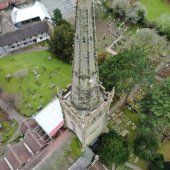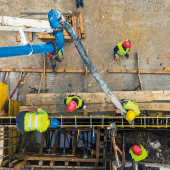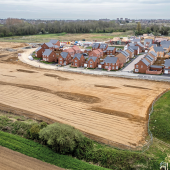Haven of calm
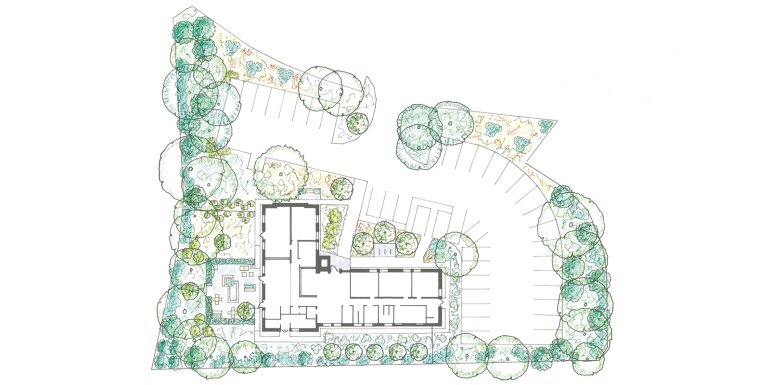
Site plan
- Prairie-style planting to open sunny roadside areas
- Entrance planting
- Woodland planting around existing mature trees
- Romantic style to rear
- Woodland planting under existing mature trees
- Formal garden
- Colourful shrubs, grasses and perennials
Landscape Designer Catriona Rowbotham has been tasked with boosting the biodiversity and wellbeing of staff at CABE’s headquarters on an industrial estate surrounded by busy roads.
In 2019, CABE began upon a project to refurbish Lutyens House in Northampton, its office HQ. The aim is to use this project as a showcase for best practice by reducing carbon emissions by 90%.
The carbon footprint has been kept as low as possible by reusing and recycling – for instance, by only allowing the use of refurbished furniture and refurbishing all the existing doors. Although all the windows had to be replaced to provide a more comfortable indoor environment and reduce heat loss, CABE has worked hard to measure whether replacing the existing radiators was necessary and concluded that they would be kept and in future will work alongside an air source heat pump (ASHP). The knee-jerk reaction to such a refurbishment project is to externally insulate, but CABE was able to make significant carbon savings from various refurbishment measures such as new roof insulation and windows, which outweighed the usefulness of the external insulation option. With the client and architect Stagg Architects working closely together, it provided an inspiring antithesis to the standard ‘rip it out and start again’ approach.
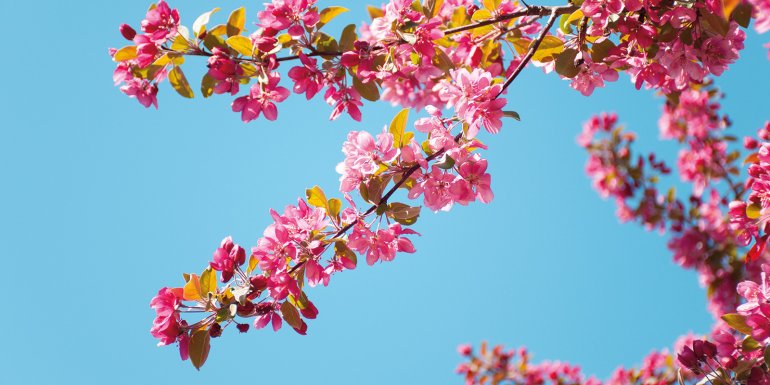
As part of this project, CABE has tasked my practice Catriona Rowbotham Garden Design with the redesign of the landscape surrounding the building. The brief is to provide staff with an attractive external space, add planting to shade windows, shelter the site from traffic and noise pollution, and increase biodiversity.
To this I have added my own practice aims: to increase connection with the seasons and to encourage staff outside, either to sit and work, have walking meetings or take outside breaks – all of which would increase their wellbeing.
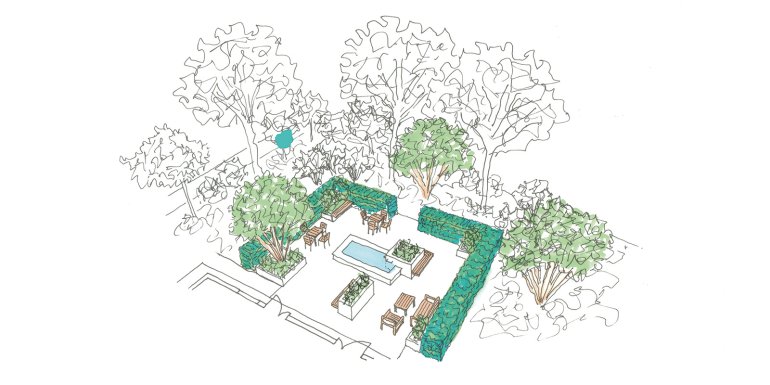
Noise and pollution
When first visiting the site, the issues with the existing landscape became clear. The site is surrounded by noisy roads and the pollution there – measured by Architype before any work was started – was at a greater level than on the London Underground. Surrounding much of the site is an ugly metal fence, and the entrance to the building itself is underwhelming with overgrown box, some ivy as ground cover and not much else.
Elsewhere, poor scrubby grass around most of the site has a maintenance routine of leaf clearance, mowing and weedkiller. Perhaps unsurprisingly, the only staff that use the half acre of soft landscaping around the building are the smokers who huddle close to the building. On the positive side, there are stands of beautiful mature trees, planted in the 1970s, surrounding the site, with canopies that can be appreciated from the first-floor office windows.
Part of the site has been earmarked by the architect for a new formal breakout garden leading from the new conference rooms for staff and visitors to gather, rest or work. However, the rest of the site is really a blank canvas, so in my case there is not much to remove before starting again.
In order to provide a series of diverse habitats, the site has been diagrammatically divided into areas, with the use, existing tree cover and orientation informing the planting style for each area. More naturalistic planting styles will be used in four types of area around the perimeter of the site, with that planting then being repeated in the more formally maintained areas closer to the building so that there is a coherence to the planting around the whole site.
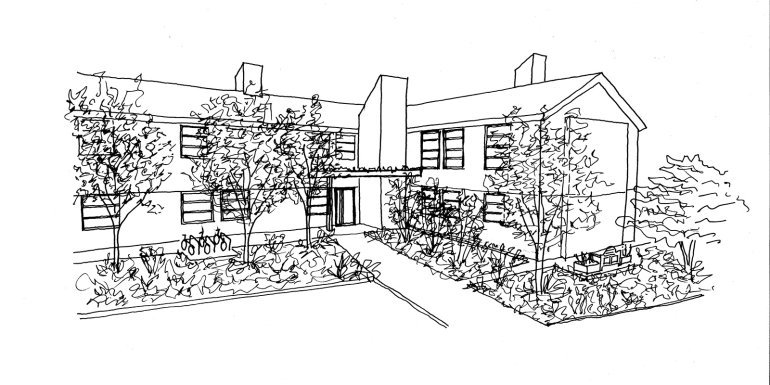
Biodiversity
Firstly, woodland-style planting is proposed where there are existing stands of mature trees, which has the advantage of being lower maintenance, allowing for increased biodiversity and providing a visual and physical screen against pollution and noise. Thorny blossom and berry-laden shrubs will be planted around the perimeter, with the intention of concealing the fence line and deterring intruders, as well as providing food for birds and insects. Spring flowering perennials will provide ground cover, with the flowers fading as the trees come into leaf, then the fallen leaves in autumn being left on the ground will provide a natural mulch until the whole cycle starts again. The rotting leaves and deadwood will provide habitats for ants, woodlice and beetles. Winter highlights will include witch hazel blossom and hellebores to ensure a level of interest all year round for wildlife and a connection with the seasons for staff.
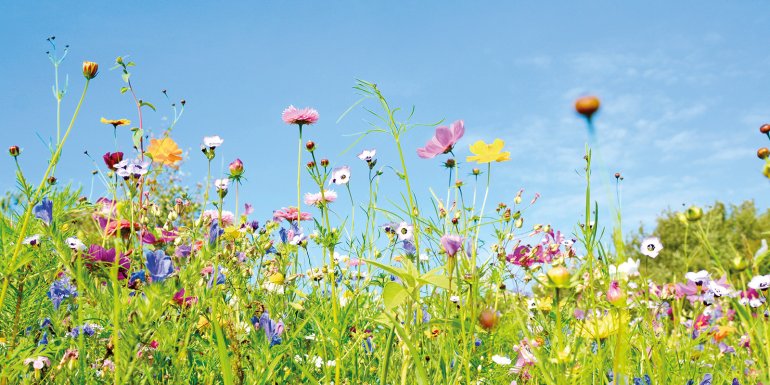
At the entrance to the car park along Billing Brook Road – where the site is sunnier and more open – mixed species turf, left to grow long for much of the year, is proposed to create year-round green interest, with increased biodiversity and lower maintenance requirements than traditional grass turf.
Outside of the smaller conference room, linking the main wooded area and the more open sunny areas, will be an area with dramatic tall grasses, autumn flowering perennials and shrubs with striking autumn colours.
At the rear of the building a more romantic mood is planned, with crab apple trees to shade windows in the summer, as well as provide blossom and fruit for wildlife. Below these, wild shrub roses will be underplanted, with perennials selected to provide low-maintenance ground cover. This rose and perennial planting will continue around the side of the building until it meets the entrance planting.
Directly in front of the building entrance will be the first of two more formally maintained areas; birch trees and tall shrubs with good winter bark colour will provide a strong entrance statement, while also serving to shade the windows in the summer. The planting around these trees and shrubs will be drawn from the more naturalistic palettes employed elsewhere.
Finally, outside the main conference room will be the new formal garden breakout space. Seating areas here will be broken up to provide small, intimate eating and working areas with a variety of café tables, benches and a lounging area. These will be arranged around a raised pond, with a small waterspout giving gentle background noise to distract from traffic sounds. Here the woodland planting will be echoed in planters connecting this space to the less formal woodland beyond, with the whole enclosed by a protective yew hedge, as yew is especially good at the absorption of pollution.
Change of perspective
Some initial comments suggested that entirely removing the lawn was a somewhat radical move, but when it was explained that there would be no need to pick the autumn leaves up, mow often or apply weedkiller any more, the idea was welcomed. Staff responses to the landscape design have been positive – my favourite comment in a feedback session was: “You had me at ‘pond’!”
The formal garden and first phase of woodland planting will be going on-site this year, with subsequent phases being implemented before the CABE centenary celebrations in 2025. Hopefully one day soon we will see staff and visitors taking meetings around the grounds, popping out to the outside seating areas to work outside on their laptops, taking a break from a conference or simply enjoying their lunch in a relaxing environment surrounded by birds, butterflies and bees.
For more, visit crowbothamgardendesign.co.uk


